Effective eCommerce marketing doesn’t end when a customer buys your product. The ideal time to foster loyalty with your existing customers and encourage customers to return to your site is immediately after they’ve made a purchase, while your brand is still fresh in their minds. Marketers can maintain a strong relationship with shoppers by sending them relevant content once they’ve completed a purchase. After all, customer retention is a more cost-effective strategy than acquiring new ones.
Here are 7 types of post-purchase emails to keep your customers coming back for more.
1. Provide shipping information
A shopper has taken the plunge and bought something from your site. Great! Now it’s time to act fast to reassure them and manage expectations with insights into the shipping process.
Allbirds sends a post-purchase email confirming the products that have been purchased, the shipping option selected and the option to view the order status.
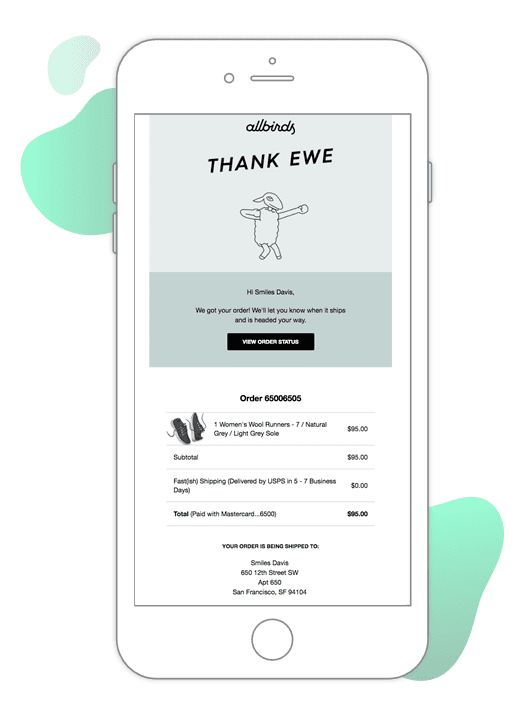
Source: Allbirds email
2. Offer post-purchase guides
Sending post-purchase emails to an existing customer is a perfect opportunity to establish a relationship that goes beyond simply buying and selling. Show your customers how to get the most out of their new purchase with a post-purchase guide. Our research shows that 1 in 4 customers aged 16-24 want retailers to send personalized post-purchase guides, making this a worthwhile tactic to try.
Patch sends a post-purchase email to new customers to share resources that help them take care of their new plant.
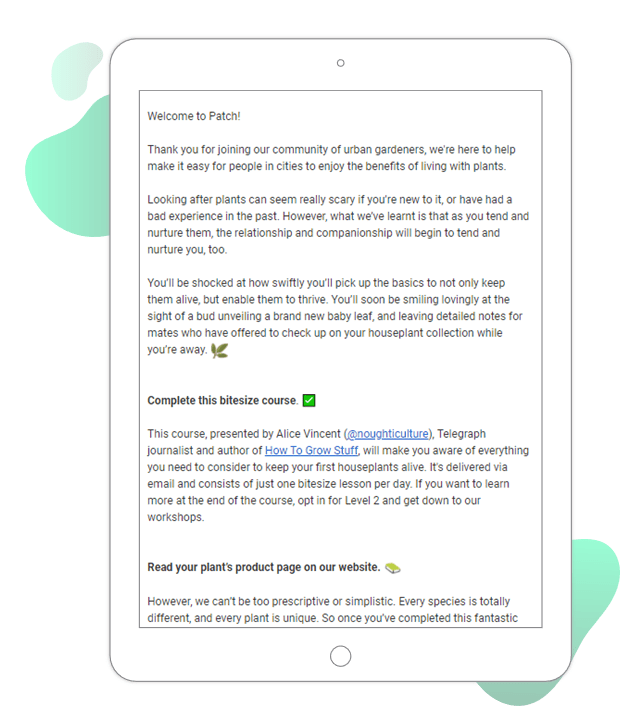
Source: Patch email
3. Ask customers for feedback
Customer reviews are valuable to online retailers for a number of reasons. First, reaching out for reviews allows you to keep in touch with your customers and you can potentially gain a repeat customer. Then once you’ve collected your customer reviews, you can add them in real-time to your emails and website. Ratings and reviews are a powerful form of social proof and also give an SEO boost to your website.
Soletrader sends a post-purchase email to ask customers to submit reviews for their recent purchase.
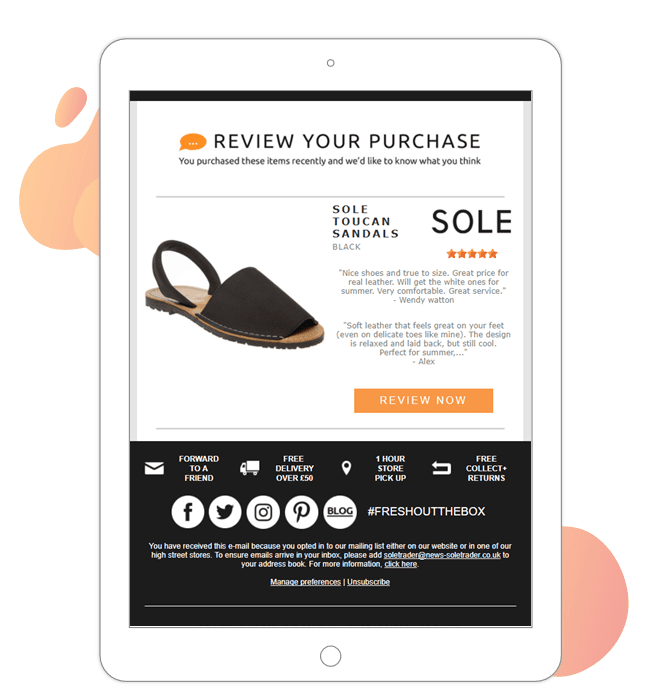
Source: Soletrader email
4. Share personalized product recommendations
Although some customers may not be ready to make another purchase straight away, a post-purchase email is an opportunity to remind customers you exist and keep your brand at the front of a shopper’s mind.
Personalized product recommendations are an effective way to improve the post-purchase experience and gain repeat customers, especially since 1 in 3 consumers want to see products and offers featured in marketing emails based on items they purchased. Use your post-purchase emails to share personalized product recommendations based on the customer’s recent purchase behavior.
Simply Supplements sends customers a post-purchase email with tailored product recommendations, as well as items that are popular with other customers.
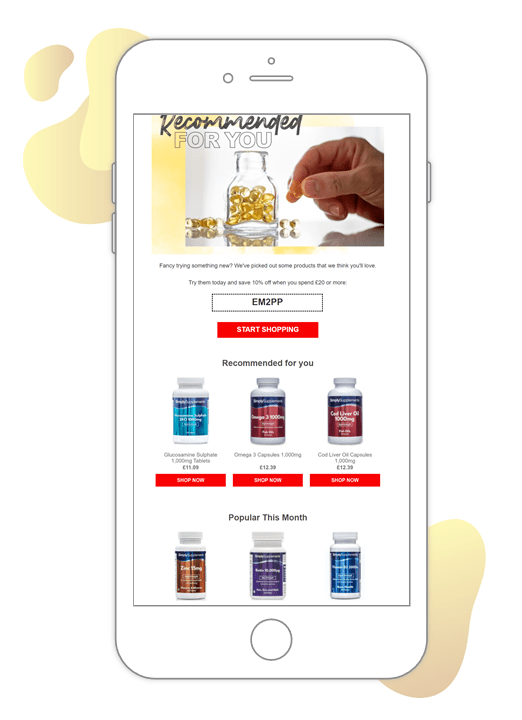
Source: Simply Supplements email
5. Send replenishment emails
For frequently purchased consumer goods, you can give customers a timely reminder to repeat the purchase they recently made as part of your post-purchase strategy. This kind of email should not be sent immediately, but when the customer might soon run out of the product. 1 in 4 consumers aged 16-24 want retailers to send them replenishment emails, so make sure this type of triggered email is included in your post-purchase repertoire to improve customer satisfaction.
Viovet sends replenishment emails to customers of particular products, reminding them that the time to reorder is approaching. These helpful reminders foster customer loyalty and increase the likelihood of repeat purchases.
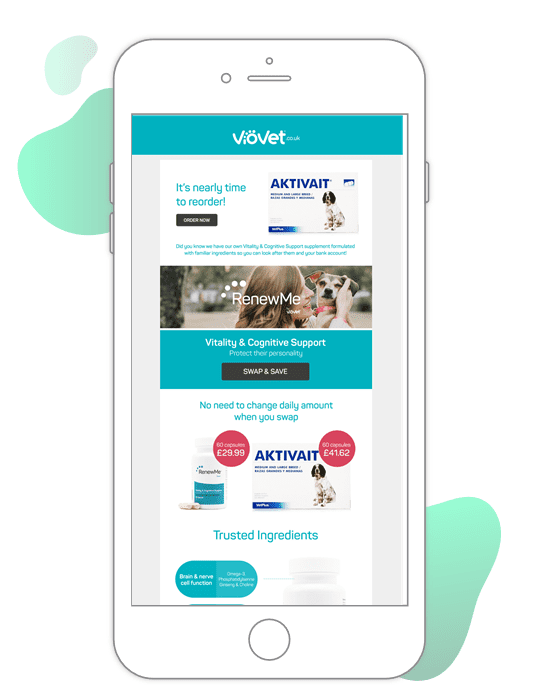
Source: Viovet email
6. Take advantage of micro conversions
Whilst encouraging repeat purchases is the main aim of post-purchase emails, it’s important to remember that small steps will add up to your goal. A customer may not be ready for a further purchase, but you can focus on tempting them back to your site.
Use your post-purchase emails as part of your digital marketing campaigns to encourage micro-conversions, such as social following and sharing user-generated content (UGC).
Need Supply Co. encourages their customers to share pictures of their purchases once they’ve arrived, letting them know which hashtag to use to ensure they have a chance of appearing on the Need Supply social feeds. This fosters loyalty by making customers feel like part of your community. Plus, you can use all that precious UGC as social proof to build trust with new shoppers.
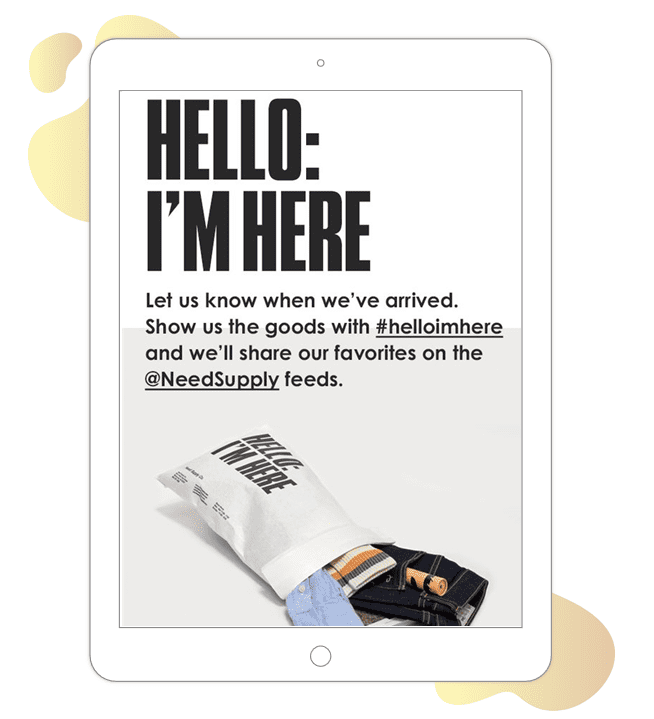
Source: Need Supply Co. email
7. Reactivate customers
Re-engage with customers you haven’t heard from in a while. Let them know that you miss them and encourage them to return to your website with a coupon for money off their next purchase.
Crate&Barrel offers their lapsed customers a 20% discount, making it clear why the discount is being given by saying ‘We miss you’.
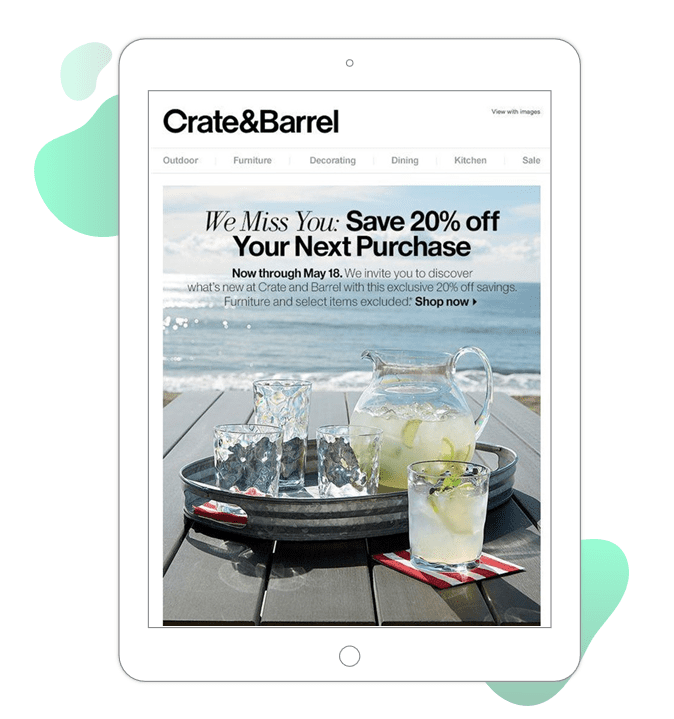
Source: Crate&Barrel email
Discover more ways to up your email game in our eBook: 5 Easy Ways to Make Your Emails Perform Better
Disclaimer:
This blog post is for informational purposes only. Fresh Relevance is not claiming to provide its services to the companies and brand owners referred to in the blog post.







